Located in southeastern Iran with almost 800,000 inhabitants, Kerman is situated on a sandy plain 1749 meters above the sea level. Kerman city is the capital of Kerman province covering an area of 181,714 km². Kerman is one of the largest and most important producers of Persian carpets as well as pistachios and dates on the world market. The province is rich in minerals such as copper, coal, chromium, lead, zinc, uranium and aluminum; although mining has still remained on a small scale. In this article we will learn about Kerman and Bam Citadel:
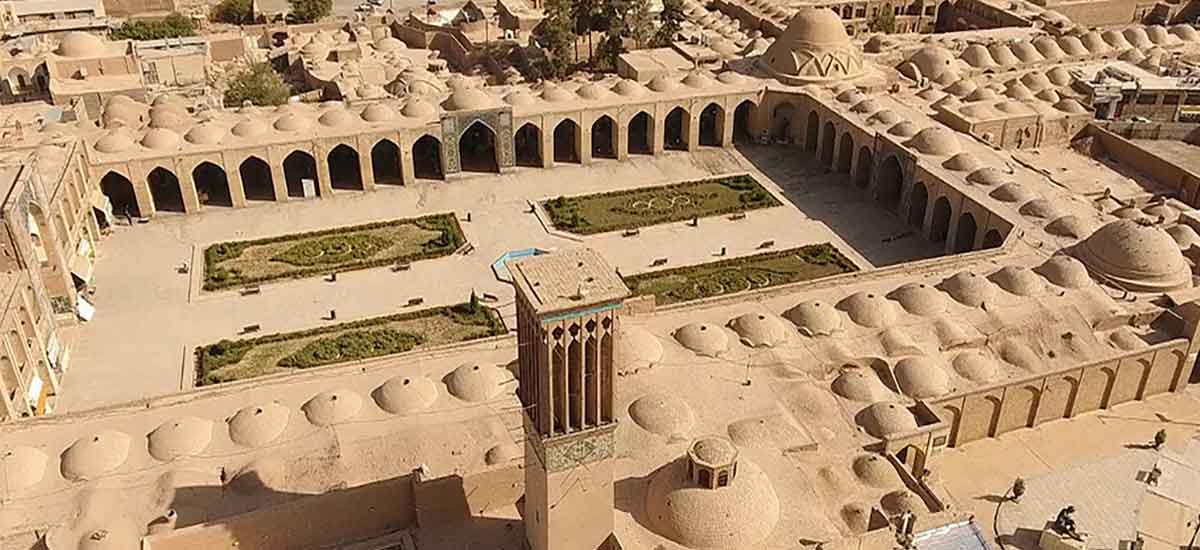 Ganj Ali khan square, Kerman
Ganj Ali khan square, Kerman
Kerman Tourist Attractions
Kerman has always been an important center on the trans-Asian trade routes. Believed that it was founded in the early-3rd-century AD by Ardashir I, who was the founder of the Sasanian Empire. From the 7th century Kerman was ruled in turn by the Arabs, Buyids, Seljuks, Turkmens and Mongols, and then until the Qajar dynasty by a further succession of invaders and regional despots. Kerman only gained its security under the central government of Tehran during the 19th century.
Kerman’s continuity was its commerce, the evidence of which can still be seen in the many caravanserais around the bazaar. As trade moved more to the sea in the 16th century, Kerman relied more on the production of carpets and pistachios. That is why the city is known as the city of green gold.
What to see in Kerman
Kerman province is the home lo lots of historical and natural attractions, from amazing Shahdad desert and Hazar mountain to the old citadels, mosques and caravanserais. here is the list of what you can see in this huge province.
1 Shah Nematollah Shrine
The tomb of shah Nematollah Vali, one of the most famous philosophers and Sufis of Iran, is located in Mahan. This building is a masterpiece of architecture from the last 6th centuries. It combines special architecture, a pleasant garden and mystical clarity. One of the most famous spaces in this complex is that of the isolation room. Chelleh Neshini in Sufi terms is a type of meditation, used for isolation and spiritual journeys. This complex has two entrance doors, small and large rooms, a monument, 4 tiled minarets, 2 porticos and 4 meters. The main core of this building is formed by the tomb with a beautiful dome. The oldest of them is the dome of a house where the safe of Shah Nematollah Vali is located and which relates to the Timurid dynasty. Most of the other buildings relate to the Safavid era with some additions to the Qajar dynasty.

Shazdeh Garden (Bagh Shazdeh)
The Prince Garden or Shazdeh Garden is located near the tomb of Shah Nematollah Vali in the city of Mahan (20 km from Kerman). One of the most remarkable characteristics of this garden is its location, Shazde garden located in the heart of the desert and is very well known for its design. During the Qajar period, a famous Yazdi architect, Nasser al-Dawlah, designed and built this garden next to Mahan’s mansion. There are many fruit trees in the garden and in front of the manor there are swimming pools and fountains whose water comes from the Tigran river.

Citadel of Rayen
This raw brick citadel of Rayen is located in south of Kerman and occupies an area of 20,000 m² and known as the second largest raw brick citadel in the world after the citadel of Bam. This citadel looks similar to the citadel of Bam and is located at the top of a hill near Hazar mountain. Rayen displays all the architectural elements of a deserted citadel. It is extremely well preserved, despite numerous natural disasters that have destroyed similar structures nearby, and it is one of the most interesting sites in Iran. Rayen Castle was inhabited until 150 years ago and although believed to be at least 1,000 years old. The presence of this citadel is proof of the existence of the city of Rayen before Islam, and dates back to the Sassanid era.
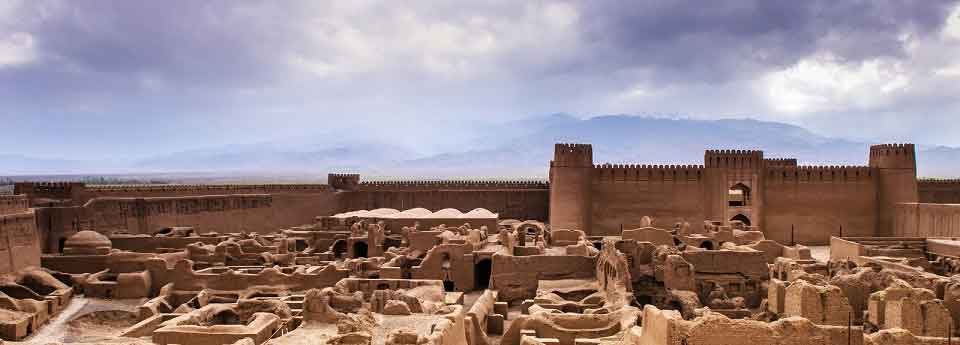
Ganj Ali Khan Complex of Kerman
Ganj Ali Khan Bath is one of the main elements of “Ganj Ali Khan” complex in Kerman, which was built in 1611 AD. Ganj Ali Beyk, nicknamed Ganj Ali Khan, was one of the rulers of Kerman during the reign of Shah Abbas I Safavid, who performed important civil works in Kerman. He created a large square in the middle of the city to host public promenades. This square, which is more than one hundred meters long and fifty meters wide, is surrounded on four sides by monuments such as a school (madrasa), a caravanserai, a public bath (Persian Hammam), a water storage and the city mint. This is an excellent collection of Safavid era civil works.
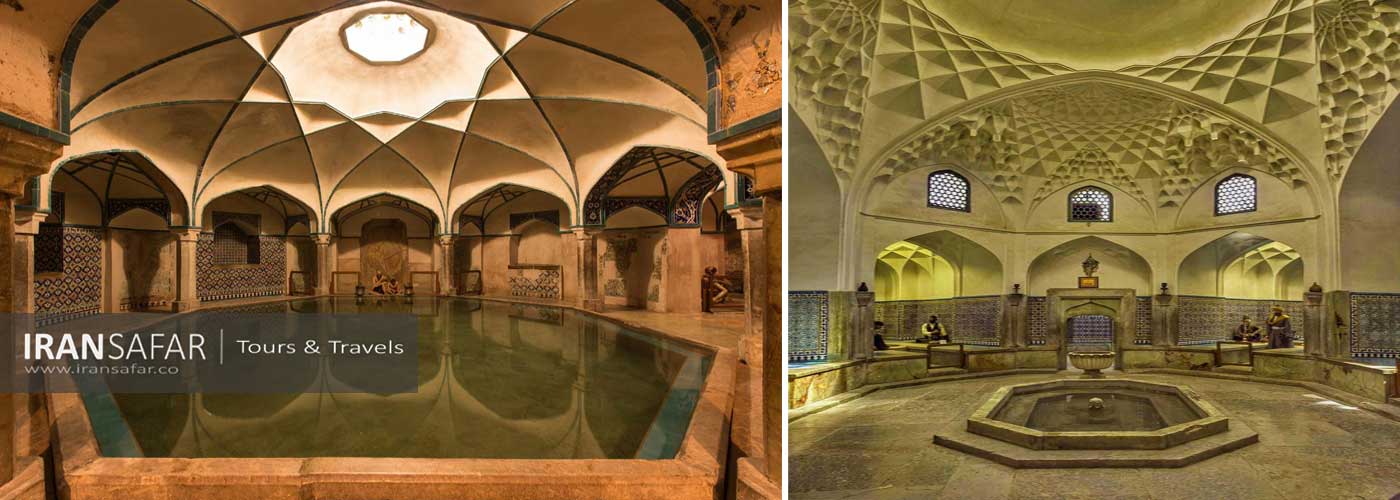 Ganj Ali Khan Bathhouse, Kerman, Iran
Ganj Ali Khan Bathhouse, Kerman, Iran
Bam Citadel
Located near the current city of Bam in Kerman province, the Bam Citadel, also known as Arg-e Bam (Bam Citadel) is the world’s largest mud brick structure which served as the government center of old town of Bam. It is listed by UNESCO as part of the World Heritage Site “Bam and its Cultural Landscape”. The first construction of this huge citadel on the Silk Road probably dates back to the Achaemenid Era (6th to 4th centuries BC) and was used until 1850.
On 26th Dec 2003, a severe earthquake struck the area and caused huge damage to the site.
The citadel is approximately 180,000 m2 and has walls of 2 to 7 m in height and 1815 m in length. In the architecture of Bam ancient city, there are two distinct parts:
1) The castle or the government part located at the heart of the town within the inner walls, which includes a military fort, “Char Fasl” mansion, a barrack, a 40-meter deep well and a stall with a capacity of 200 horses.
2) The rural section surrounding the government section, which includes the main entrance to the city, the main route connecting the entrance to the fortress and the market along it, about 400 houses and public buildings such as a school, Bath and Gyms!
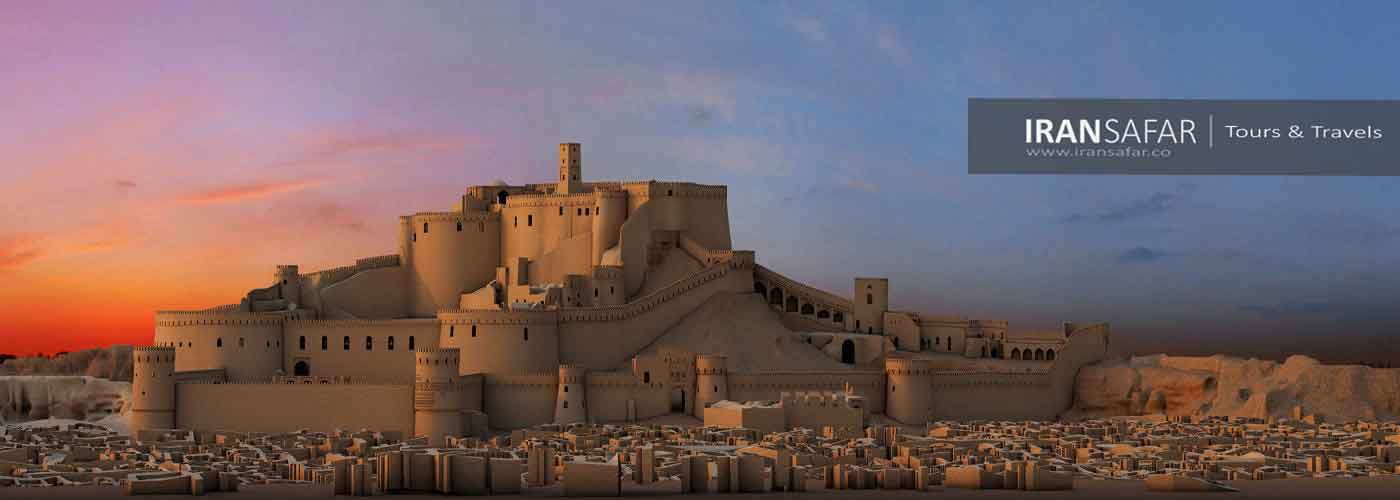

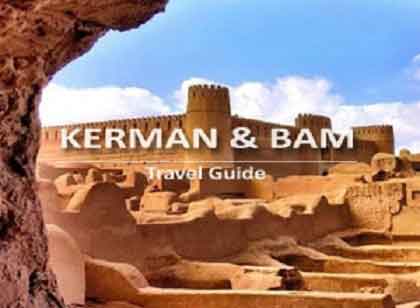

Comment (0)